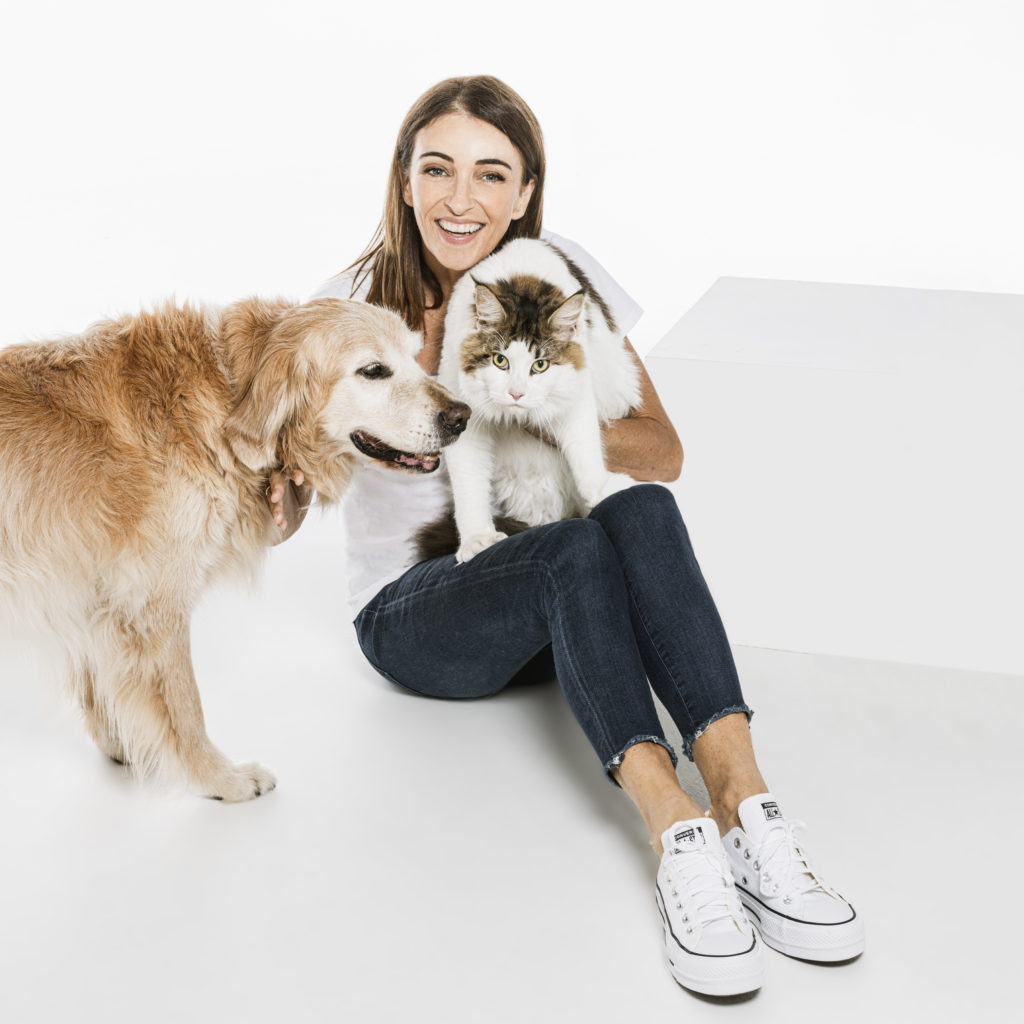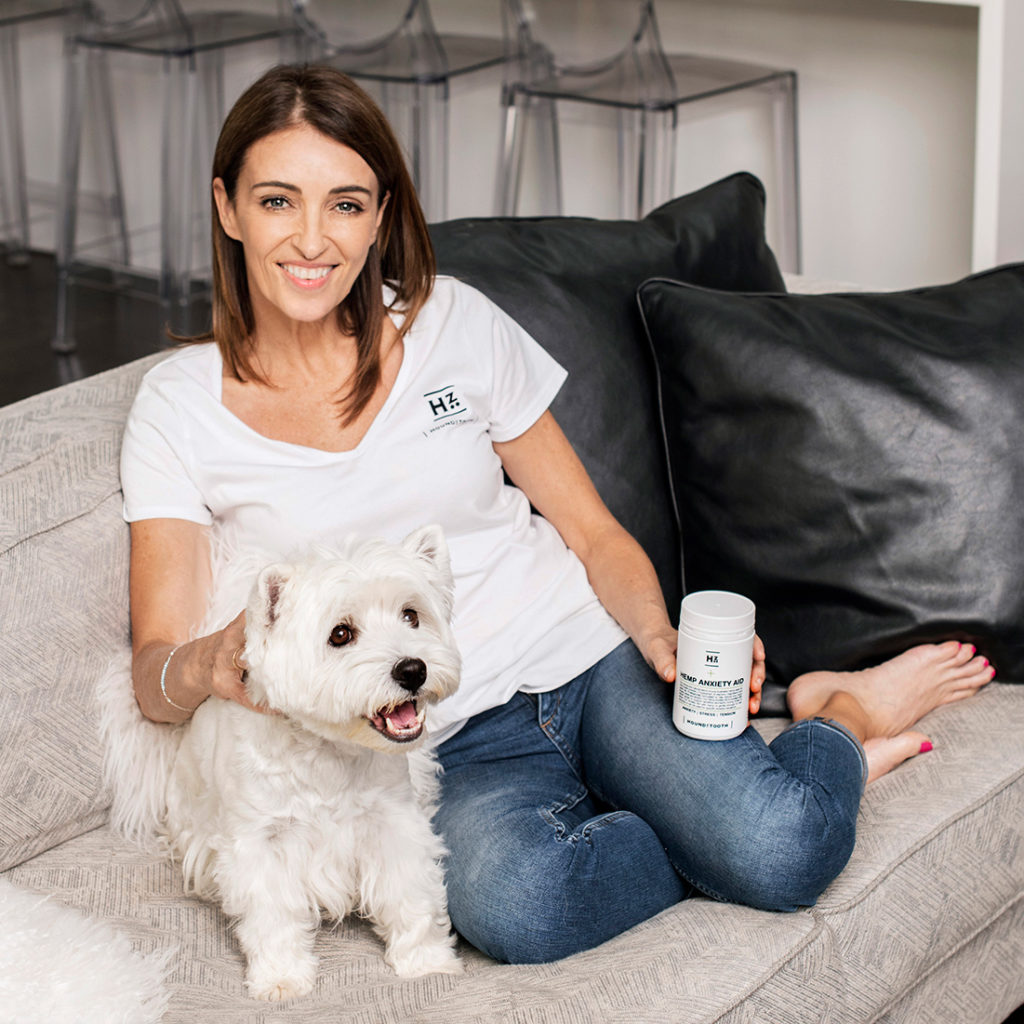New Year’s Eve Pet Safety Tips with Dr Katrina’s Warren
New Year’s Eve Safety Tips for Dogs and Cats
New Year’s celebrations for humans mean fireworks, big gatherings and fun, all things we love about the holidays, but it can be very stressful and frightening for our furry friends!
We asked Houndztooth brand ambassador and veterinarian Dr Katrina Warren to share her top tips to help keep your pets safe this New Year’s Eve, such as creating a safe environment for your dog and using a natural health supplement targeting dogs with anxiety.
Dr Katrina says, “Fireworks can be terrifying and overwhelming for pets; more pets get lost or injured on New Year’s Eve than on any other night. Pets often panic and run to try to escape the noise and flashes of light, and sadly, many pets get hit by cars. Many pets that are safely confined at home will still find the fireworks extremely stressful, but there are several things you can do to help them.”

1. Update Identification
Even if your pet is kept inside, the loud sounds of fireworks can cause them to panic; dogs have been known to break through glass windows and push through screens. Ensure your dogs are microchipped, have current contact information on their id tags, and their collars are fastened securely.
2. Organise a sitter
If you will not be home, try to organise a sitter. If it is possible to have a friend or family member stay with your pet, either at your home or their place, so your pet is not left alone. Supervision will prevent them from escaping or getting injured.
3. Keep all pets inside.
Keep all pets inside in a safe room. Close all blinds and curtains to block the flashes of light and as loud sounds as much as possible. Cat owners, remember many cats will disappear at dusk, so call them inside during the afternoon.
4. Exercise your dog thoroughly
Exercise your dog thoroughly during the afternoon; they will be more likely to relax. Feed them a couple of hours later, so they are not hungry.
5. Provide a comfortable hiding place
Providing a comfortable hiding place, such as a covered crate or cardboard box with blankets inside and a blanket to cover it, may help mask the noise. Don’t allow a scared pet to run free of the house – ensure they are confined. Never tether your dog as they can panic and choke themselves on their collar or lead.
6. Mask the noise
Mask the noise by playing classical or relaxing music or turn on the TV to help cover the noise of the fireworks. If you are playing music on the radio or tv, be sure to avoid having a station on that is playing the fireworks.
7. Play a game
If possible, distract them from the fireworks activity by playing games like fetch or offering treats. Food dispensing toys can offer prolonged engagement.
8. Use natural anxiety health supplements.
Using a natural health supplement such as Houndztooth’s Hemp Anxiety Aid may have a calming effect. It has been designed to support the nervous system with Australian hemp seed oil for dogs, L-Tryptophan, B vitamins, magnesium, ginger, green tea and Australian salmon.

Houndztooth’s Calming Health Meal Topper is full of healthy freeze dried raw ingredients of Chicken Breast, Sweet Potato, and Apple to add a nutritious raw boost to your dog’s daily diet. Formulated to feed in combination with our Hemp Anxiety Aid our topper also includes functional ingredients of L-Tryptophan, Vitamins A, B & C, Magnesium, Ginger, and Green Tea, which may help support dogs during times of stress and anxiety, and is easy to give to your pup as it’s super tasty and entices even the fussiest of eaters.
9. Try a Thundershirt
A Thudershirt is a snug body wrap that applies gentle, constant pressure (a bit like swaddling an infant) and may help your pet feel calm during fireworks and thunderstorms.
10. Seek veterinary help
if your pet shows a severe fear response, then chat with your vet about options to help manage anxiety and noise phobias. Please do not give human medication.
